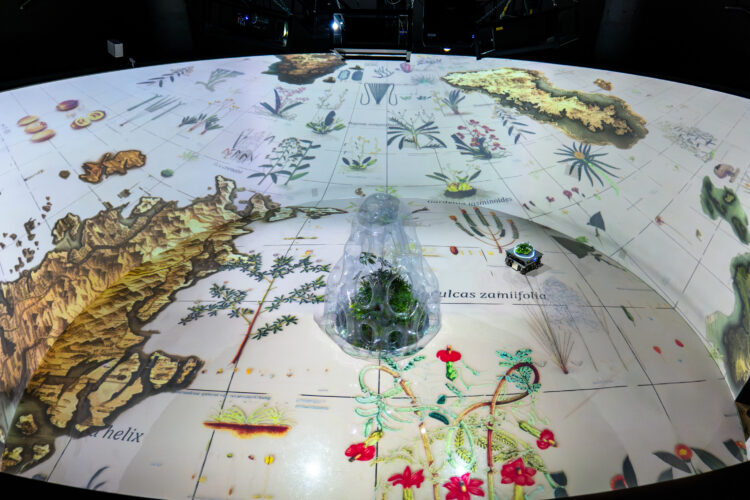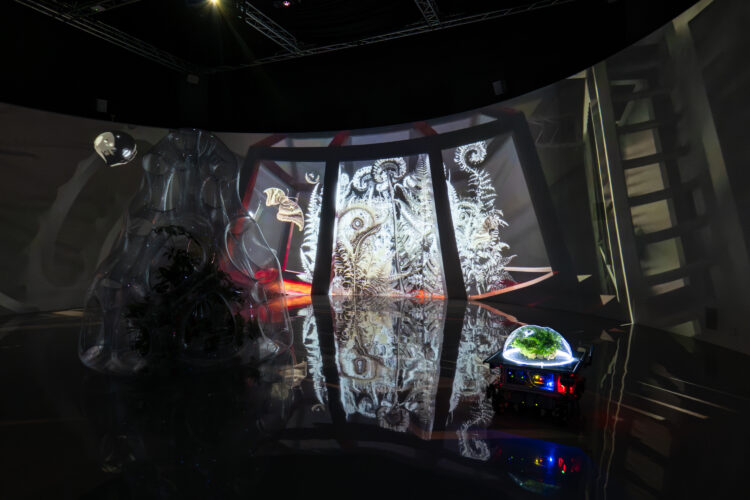Streaming Colony: Nesting Terrariums | October 2023
串流群落——溫室中的溫室
Streaming Colony: Nesting Terrariums
WU Chi-Yu+CHEN Pu
Immersive Video Installation, 10-channel audio, 2023.
Since the Age of Sail, the movement of human beings and the exchange of species have continued to shape the Earth’s ecology through cultivation, which has also pushed the evolution of ecological views based on utilitarianism. London in the 19th century was shrouded in factory-induced smog, and people imagined the ecological environment in the fast-growing industrial city through sealed glass boxes. The Wardian case was an object of technology in the form of a sealed protective container that carried a piece of the ecosystem inside. It was used in the Victorian era when ferns and orchids were quite popular and also played a pivotal role in the British East India Company’s transplantation of tea saplings from China to India. Through the industrial revolution and global trade, the Wardian case further catalyzed ecological exchanges and prompted drastic changes. This project proposes an alternative space-time where ecology exists in a sealed container, a parallel history that exists in a greenhouse. As artificial ecological development becomes the norm, the behavior of collecting species has shifted from an obsession to systematic planning. Humans are no longer occupiers and takers of nature but a key factor in how it’s shaped. The greenhouse ecosystem has become an inevitable way for the environment to exist, and the primitive way no longer exists; the archival records and the greenhouse environment become the ultimate way to imagine our ecosystem.
Since transplantation carried out using the Wardian case involves more than just a single species but an entire ecosystem, the transplantation process requires people to slice, edit, and collect the environment, similar to how a database is constructed, with an alternative ecological future thereby envisioned. In this future, the human race has drastically altered the Earth’s environment, where the ecological landscape is shaped by a database of generative artificial intelligence, and the environment exists only in sealed boxes where reality has been erased. Human beings can only maintain their memories of the past ecology through records and collected information, with the signal sent from the archival documents applied to cultivate the ecosystem in those containers, transforming the impressions and the languages stored in their memories into the fundamental elements needed for the growth of the plants, and “Light” is the signal. This piece of the forgotten signal is reprogrammed in this future environment by the terrariums that are similar to databanks, and at the same time, the self-sufficient and seemingly prolific ecosystems in the cases also contain memories of time and space, and while streaming and disrupting the colony, they go from databanks to terrariums, from one greenhouse to another.





